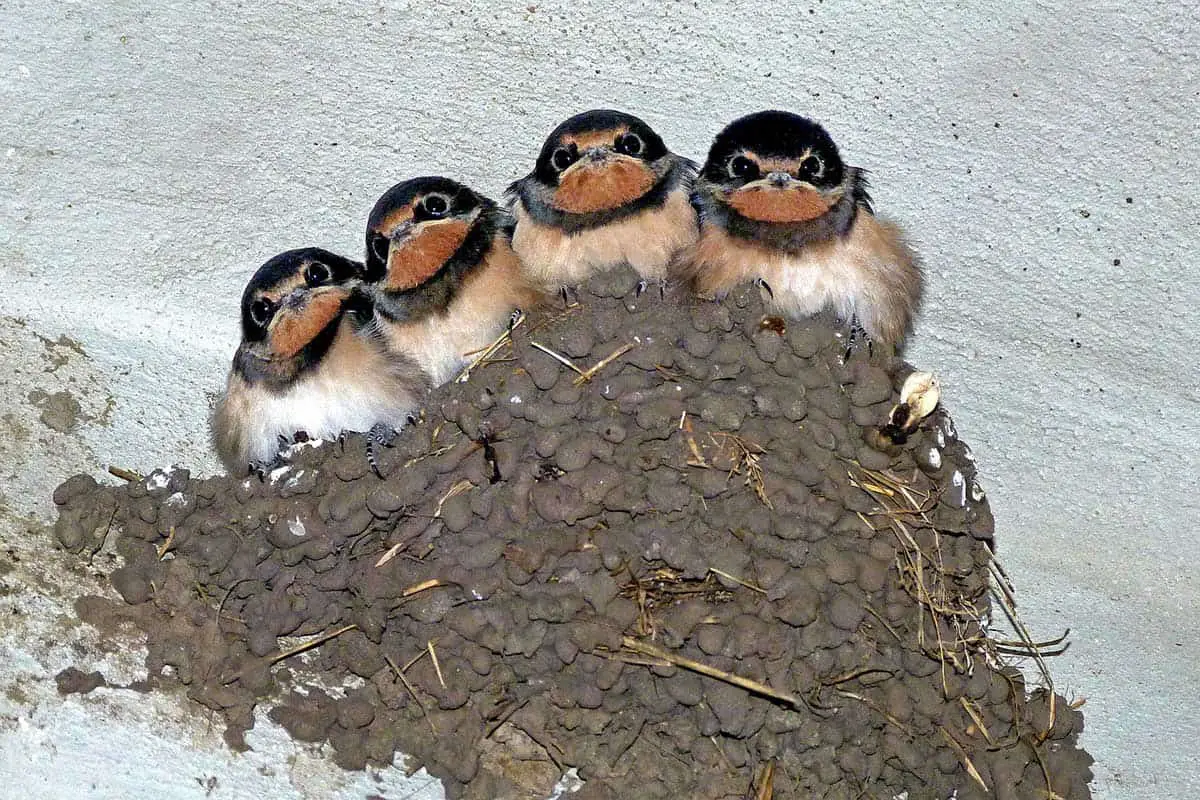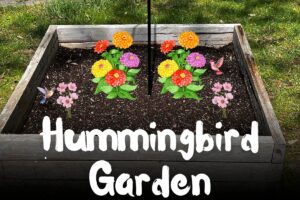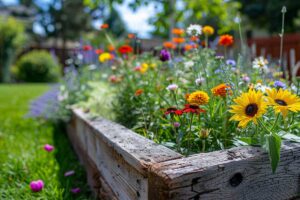This page may contain affiliate links. If you click and buy, we might get a small commission at no cost to you.
While attracting birds to your yard can seem like a fun idea, not all nesting places are made equally. In this article we will talk about which nesting spots are nuisance to live or are even downright unsafe. Then we will show you 8 tips on how to keep birds from making nests in unwanted places.
How to Keep Birds From Making Nests in Unwanted Places
Before diving into the tips on keeping birds from making nests in unwanted places, it’s important to understand what areas around your home are unsafe or a nuisance in the long run for birds to be attracted to. These undesirable nesting places include:
- On balconies, porches, or decks
- Under home eaves
- Inside drainage pipes or gutters
- On devices such as lawnmowers and grills
- Inside active chimneys
- Near busy walkways or doors
- On vehicle tires or bumpers
- Inside dryer vents
- Active locations like backyard playgrounds
Some of the reasons why it’s unsafe for a nest are self-explanatory, like how a nest inside a drainage pipe or chimney can lead to blockages or danger for the birds during rain or when you light up a fire. You also don’t want to try and use your grill or drive your car with a bird’s nest resting on it.
Active locations, busy walkways, or areas you spend time resting on like porches are also undesirable. For instance, you don’t want to accidentally disturb the nest or get attacked by protective parents.
Bird nests in these areas can also result in an accumulation of bird droppings and feathers everywhere. Bird droppings will harden and stink up the area, making it a nuisance to clean. The acidic content of droppings also easily fades the color and sheen of your structures, not to mention the potential for disease or bacteria.
So how do you discourage birds from seeking out these unwanted nesting places? Read on to find out!
How to keep birds from making nests in unwanted places
Various bird species react differently to different methods and stimuli. They are also very intelligent and adaptable, so make sure to mix and match these 8 tips on how to keep birds from making nests in unwanted places.
1. Clean up yard debris
Birds seek out dried leaves, grasses and twigs to build their nest. The fewer materials you have available in your yard, especially on your porch, balcony, or playground area, the less chances they will continuously visit and build a nearby nest.
Also, stick piles, leaf and grass piles and overgrown bushes are not only a good place to find materials, but also a good place to nest for some species. By keeping things tidy in the yard you are lowering the sheltered and hidden areas birds can nest.
2. Keep food sources away
When birds find a location with ample food it’s no surprise they decide to stay. Besides limiting building materials, always get rid of any food sources in unwanted areas too. These can include:
- Seeds
- Grasses
- Flowers
- Fruits
- Nuts
- Small berries
If you like having bird feeders, try to keep them a good distance away from more heavily trafficked areas like your deck, patio, or front door.
3. Make a natural repellent
One way to discourage birds from hanging out and nesting in unwanted places is to spray a citrus-based repellent in the area. Most birds don’t like the smell of citrus, making it an affordable and simple remedy. An added benefit is citrus fragrances can be soothing for humans and add a nice aromatherapeutic element to your outdoor space.
Another natural repellent you can make is a mixture of crushed chili peppers, vinegar, and water. Infuse the mixture in a crockpot or clear glass container in the sunlight, then spray it anywhere you want birds to stay away.
4. Use bird-specific repellents
Other types of repellents are available to keep birds away from specific areas around your home. Bird spikes can be attached to roofs, gutters and railings and prevent birds from finding enough room to land and nest between the spikes. Nobody wants to sit on a pin cushion!
Electronic repellents can work also, but have mixed results. These devices create ultrasonic sound waves that annoy the birds. This one detects when birds are near and has strobe lights in addition to the repulsing sounds.
There is also non-toxic tacky repellent you can spread on areas you don’t want birds to nest. The stickiness of this substance makes it uncomfortable for birds to land on and discourages them from nesting there.
This isn’t my favorite option because it has the potential to really gum up the feathers and smaller birds could get stuck. I would use this as a last resort if other methods don’t work.
Glaze repellents can also be sprayed on your roof or devices to create a slippery, flat coating that’s uncomfortable for landing. Depending on the area you want to cover, you may need to consult a construction builder or painter for information on the best glaze to use.
5. Modify your light fixtures
Birds are attracted to the warmth from light sources and often will choose to nest near or on these fixtures. While you probably don’t want to remove light fixtures completely for nighttime safety reasons, you can modify them to discourage birds from nesting.
For instance, you can buy bird spikes to install around the light bulb. Also, make sure your light fixtures don’t have a hold or small ledge that birds can use for nesting by removing them or swapping them out. You can also try swapping out your regular light bulbs for LED bulbs, which tend to give off much less heat.
6. Show there are predators
To ensure their safety and the safety of their young, birds want to make sure the area they nest in is free from potential threats.
If you don’t have pets, you can place decorations or objects shaped like their natural predators in areas you don’t want them to nest. For example, this owl sculpture with a rotating head can easily do the trick. Also, make sure to move the object around every few days.
If you do have cats or dogs, let them roam around outside. Cats are natural predators to birds and seeing one in the area will discourage birds from staying too long. For example, you can add a catwalk on your porch to encourage your cat to hang out in the area.
7. Hang shiny and reflective things
Shiny or reflective objects can disorient a bird’s sense of direction and confuse them enough to keep them from landing nearby. You can easily place strips of flash tape around the locations you don’t want them nesting. Other objects you can use include:
- Creating a wind chime from a piece of silverware or old CD
- Putting up small mirrors or reflective decor
- Hanging up aluminum pie plates
8. Install bird-related garden features at a distance
It’s understandable if you don’t want to scare birds away completely from your outdoor space. When installing a bird feeder and birdbath, make sure you keep it far away from any structures and locations that are unwanted nesting places. Also, place the birdbath and feeder close to each other, so the birds hang out in one spot of your yard only.
9. Screen any pipes or vents

Certain types of birds like to nest inside cavities. The problem is they may see your dryer vent, louvered attic window, chimney or other small holes around your house as a great spot.
Make sure there are no gaps around your roof line where they can get into your attic. Install a cover on your dryer vent, and make sure any louvered attic windows have screens on the inside.



